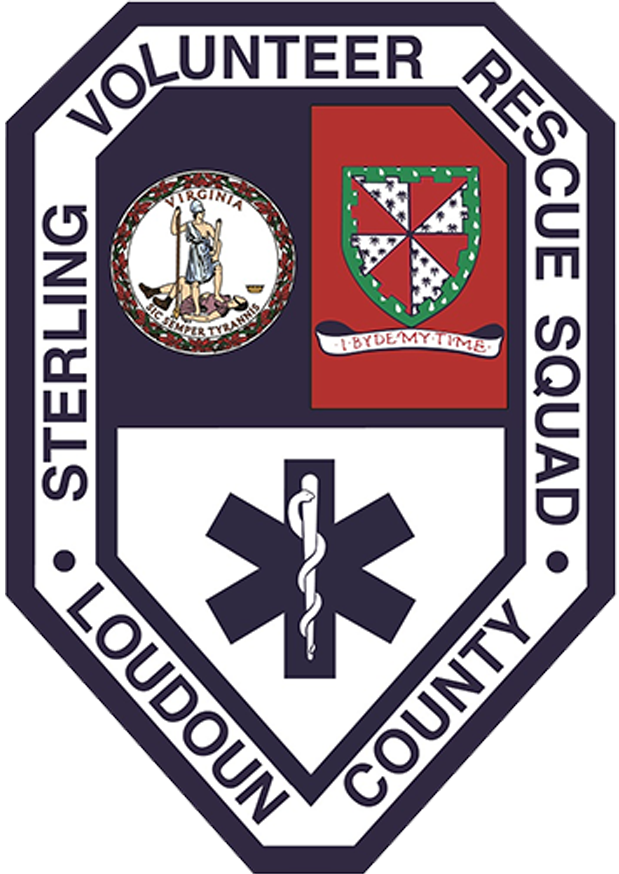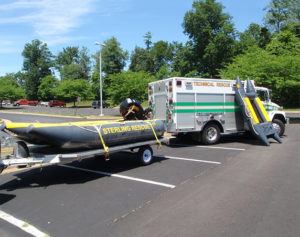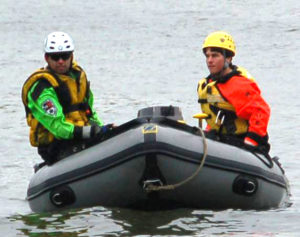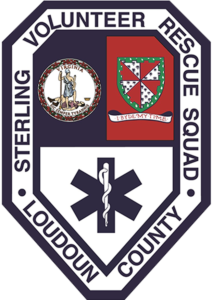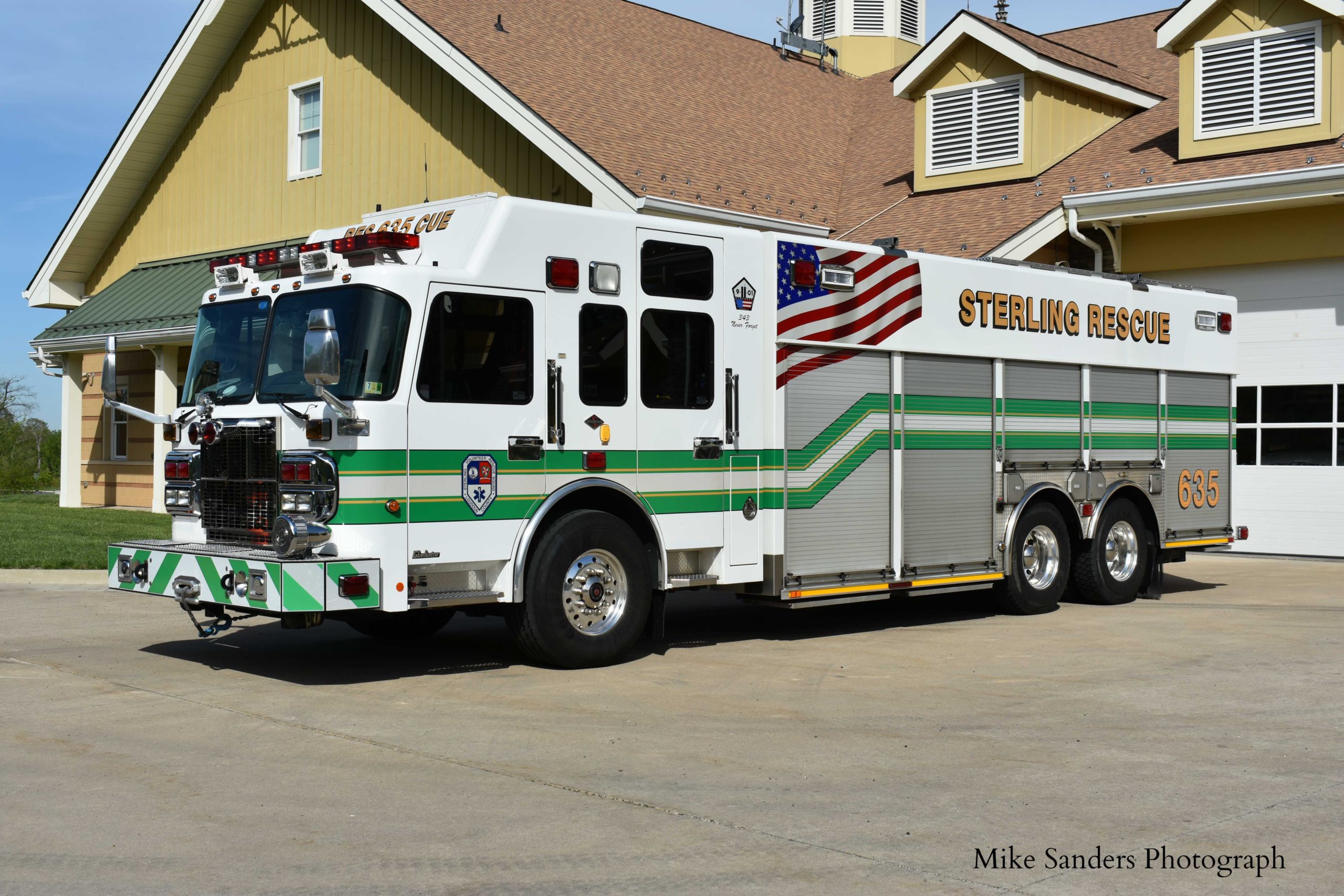
Heavy Rescue
Rescue 635 (Side View), 2010 Spartan Gladiator SVI
Heavy Rescue operations are primarily conducted by Rescue 635, a heavy rescue apparatus. Rescue 635 carries a crew of 6-8 members. Rescue personnel are trained as firefighters, along with their emergency medical certifications. Our rescue personnel are trained to assess complex and often dangerous rescue scenes and rapidly employ the wide variety of equipment on Rescue 635. The apparatus carries extrication equipment for automobile accidents, along with additional specialty equipment for a wide variety of rescue situations. This vehicle has a light tower to provide lighting of nighttime incident scenes and self-contained breathing apparatus (SCBA) cylinders used in firefighting and other rescue situations.
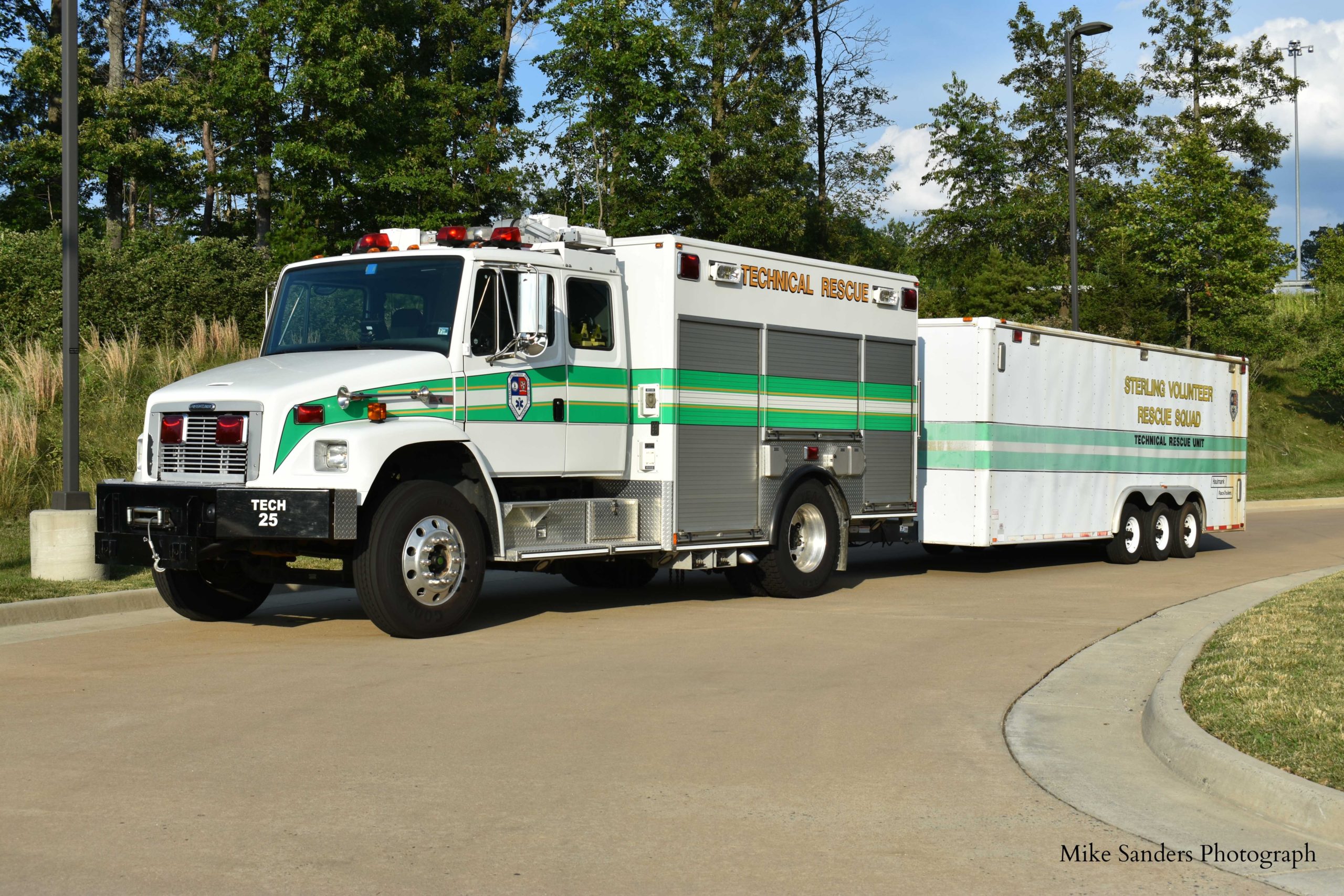
Heavy Rescue
Technical Rescue truck, 2004 Freightliner 70/ American LaFrance
(Medic Master)
Sterling Rescue also operates a Technical Rescue Support Unit and trailer to respond to structural collapses and emergencies involving trenches or confined spaces. These units carry extensive amounts of equipment specific to structural and trench rescue operations.
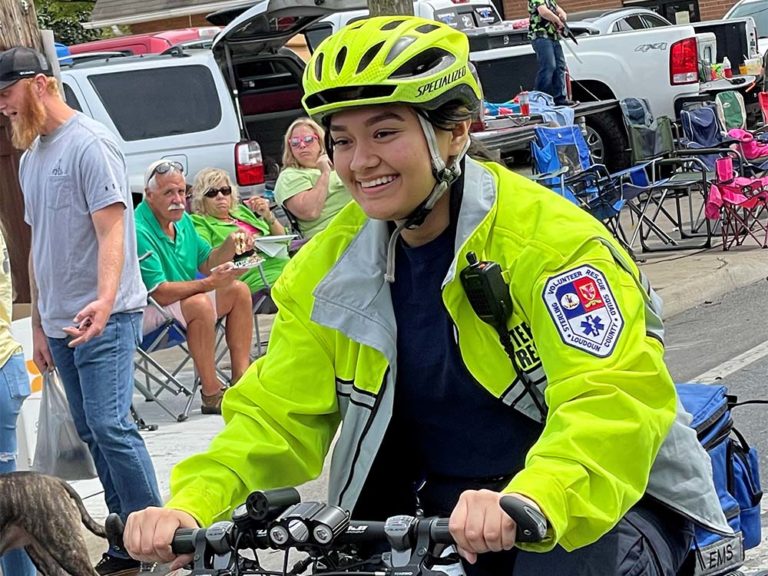
Bike Team
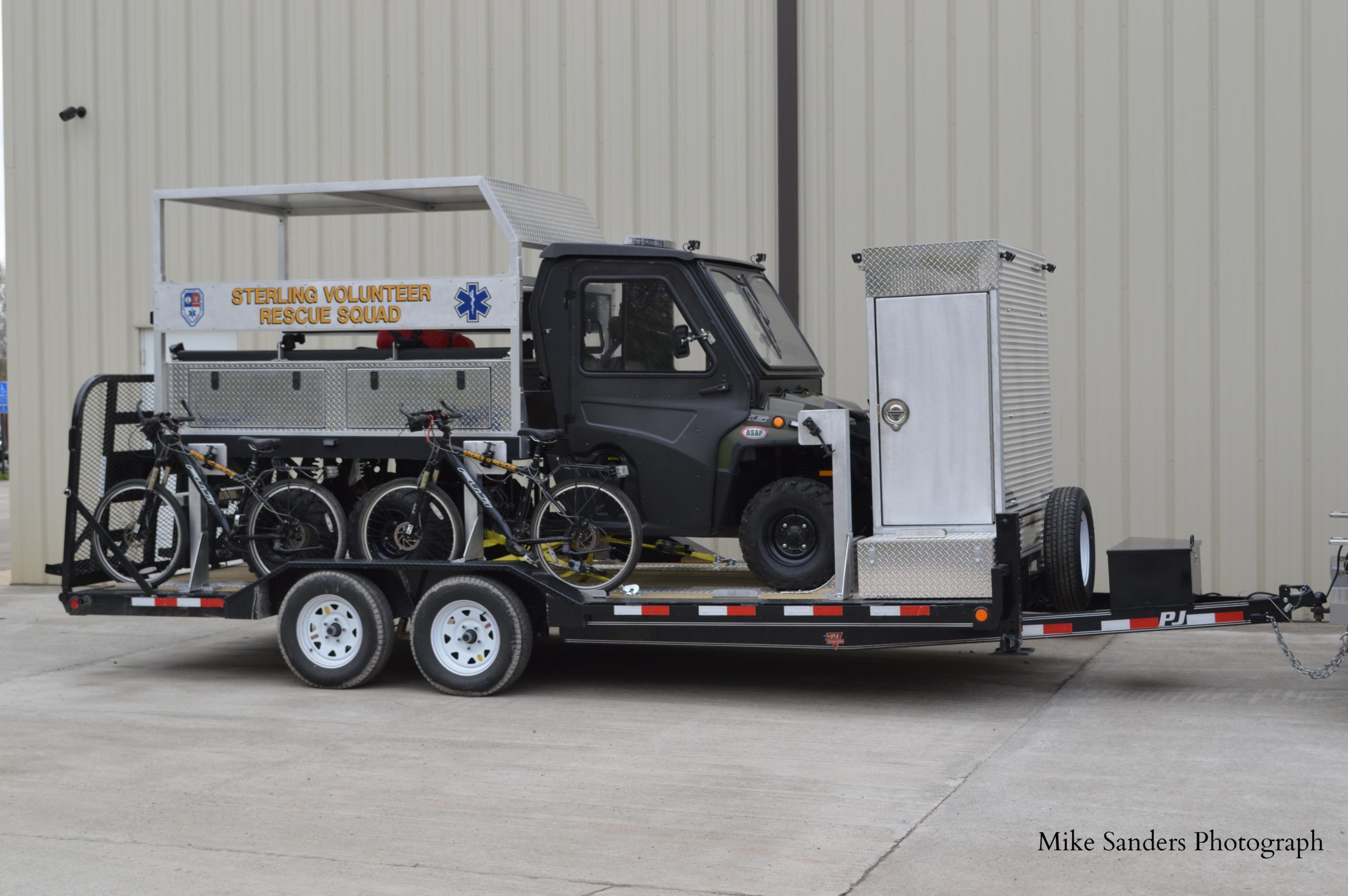
Gator Utility Terrain Vehicle
Polaris 6 wheel ATV on bike trailer
Operating in Northern Virginia, with both highly developed urban areas and undeveloped rural areas and recreation sites, Sterling Rescue must be able to deliver emergency medical support wherever it is needed.
Our bike teams and Gator Utility Terrain Vehicle (UTV) can operate where ambulances cannot, in environments from trails in wooded areas, to major events in urban areas. We conduct operations on the trails of Algonkian Regional Park, the Washington and Old Dominion (W&OD) Trail and in large events, such as the Presidential Inauguration and the Marine Corps Marathon, where the presence of hundreds of thousands of people make it impractical to operate large ambulances.
Bike Teams typically operate in teams of two, with first aid and defibrillation capability and radios. The Gator UTV is equipped much like a small ambulance, with a full size strectcher and a substantial basic life support and even advanced life support capability. Gator teams are often staffed with Paramedics, delivering a substantial advanced life support capability in a small, off road capable package.
How the units operate depends on the mission. In a large event like the Marine Corps Marathon, Sterling Rescue operates as a part of a large, unified command team operating under National Incident Management System (NIMS) procedures. A typical deployment uses bike team personnel to initially respond to calls, dispatched by sector dispatchers. The bike team assesses the situation, renders assistance, and, if needed, calls for the Gator. The Gator provides further assistance and transports the patient, if needed, to an area medical support site, typically still in the event area. From there, the patient is treated and, if needed, transported to a hospital by ambulance (or transported by the Gator to an area where ambulances are staged).
SVRS operates two boats for water rescue services. The Potomac River forms the northern border of Loudoun County and is within SVRS’s first due area. There are also several ponds within our first due area. SVRS operates two inflatable Zodiac type rigid hull inflatable boats, one from each station. SVRS also maintains an inventory of cold weather and ice rescue equipment, as cold weather rescues are possible. SVRS personnel must obtain water rescue certifications before joining the water rescue team.
